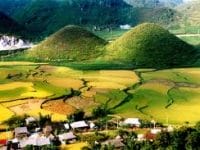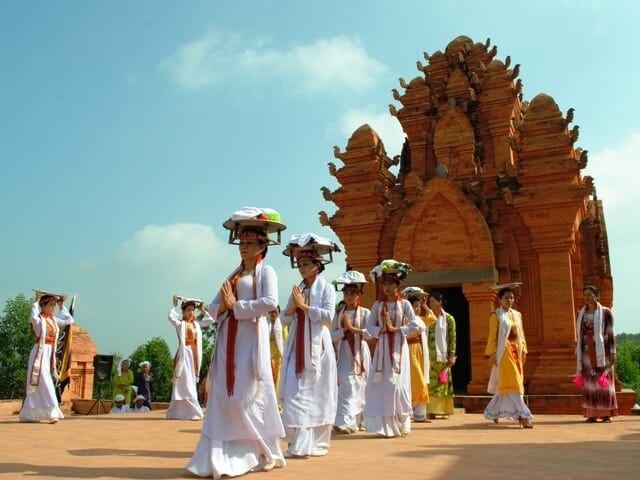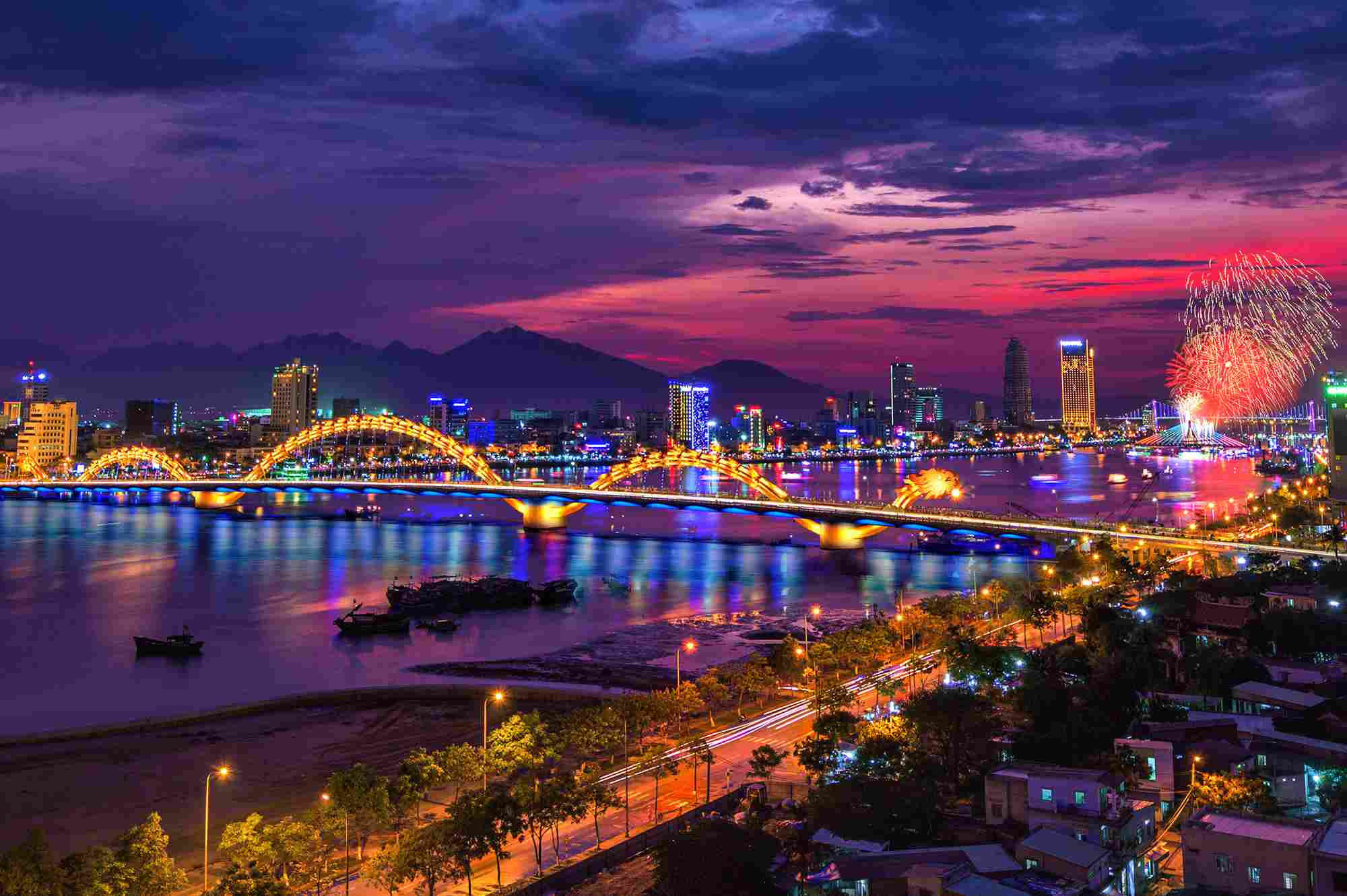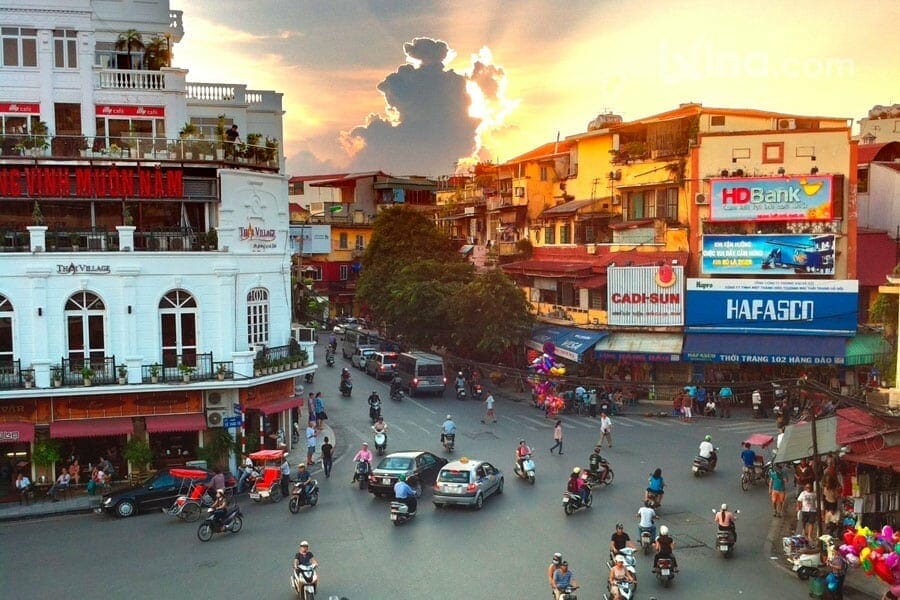The border region of Lung Cu on the Dong Van material upland is titled the rooftop of War and is unreal for its real special object.
The rooftop of War
Lung Cu is almost 200km from the municipality of Ha Giang. On the roadworthy from the town to the bounds extent there are center cliffs on one view and depression abysses on the added. Lung Cu, or Lung Ngo in the Hmong faculty, is situated in the Dingdong Van regularise of Ha Giang arena. On the top of Bestride Rong (Agamid) stands the polygon Lung Cu General Alarm Tower with its bag decorated with amobarbital journalist reliefs featuring patterns of Ring Son discolour drums and illustrating disparate phase of Vietnamese history as wellspring as the tariff of the ethnic groups in Ha Giang field. At the top of the pillar the Vietnamese alert flutters in the support of the libber walls.
In the spring time, the forest of Lung Cu is full of white plum flowers spotted with snow while the valley of Lung Cu is full of pink peach flowers. Here, Sa moc trees grow in spite of the frost, snow and cold wind.
Lung Cu still preserves many historical and cultural objects from the reign of the Hung Kings onwards. During the Tay Son dynasty, King Quang Trung ordered a large drum to be placed here and the drumbeat was the only means of long distance communication at that time. The drum is now located in the out-post of Lung Cu.
The Ma Pi Leng, O Quy Ho, Khau Pha and Pha Din mountain passes are praised by tourists as the “four great mountain passes” in northern mountainous Vietnam. Ma Pi Leng and Dong Van Rock Plateau have been called “Geological Statues” by French scholars for a hundred years. Looking down at the deep abyss from this mountain pass, one can see the Nho Que River far below. It takes more than a day to reach  it from the top of the pass.
it from the top of the pass.
Ma Pi Leng, which means “the bridge of the horse’s nose”, is a dangerous stretch of mountain road. It passes the peak of Mount Ma Pi Leng in Dong Van Rock Plateau, which is about 2000m above sea level, and forms part of Hanh Phuc Road that links Ha Giang City, Dong Van and the town of Meo Vac.
On November 16, 2009, this part of Ma Pi Leng was recognised as a “national beauty spot” by the Vietnam Ministry of Culture, Sports and Tourism. Accordingly, the Ma Pi Leng mountain pass is also considered a special geological heritage site. The summit is considered as one of the best observation spots in Vietnam and the Nho Que River Gorge is regarded as a unique tectonic valley.
Unique cultural traditions
The busy and crowded Sa Phin market in Dong Van is held every week. Women go to the market to shop while men go to meet people, drink wine, eat thang co (a traditional Hmong dish made from different kinds of meat) and play the khen (pan-pipes). Children accompany their parents and many young people go to the market to find future spouses. Tourists from abroad are easily enchanted and may get lost amid the bright colours and boisterous sounds that are typical of this mountain market.
Khau Vai Maket was first opened in 1919 on a hill in Khau Vai Hamlet, Khau Vai commune, Meo Vac District. Today, it is held every year on the 27th day of lunar March. On March 26, crowds of local people in traditional dress travel to the market from all the corners of the mountainous area. Those from distant villages up to three mountains or four or five streams away from the market, leave very early for the market. Despite the rugged rocky mountains, deep streams and dangerous sleeve-shaped stretches of road, they all flood into the market and wait eagerly. Harmonious
 singing and the inviting sounds of the khen la (leaf pan-pipes) can be heard. Khau Vai Market is also known as a “love market”. Since the 1990s, young people from ethnic groups in the region have gone to the market for entertainment and to look for lovers. Many people have found their future spouses at the market.
singing and the inviting sounds of the khen la (leaf pan-pipes) can be heard. Khau Vai Market is also known as a “love market”. Since the 1990s, young people from ethnic groups in the region have gone to the market for entertainment and to look for lovers. Many people have found their future spouses at the market. A global geo-park
According to preliminary statistics, Dong Van Rock Plateau consists of 45 geomorphologic vestiges, 33 tectonic vestiges and numerous fossils in the layers of sedimentary rock. Conical and pyramid shaped limestone rocks can be found at the top of Mount Ma Pi Leng and interesting rock “forests” and “gardens” can be found near the Khau Vai Love Market. The Nho Que Gorge, which was formed by a fault in the earth’s crust, is particularly unique. It is more than 1km deep and flanked by steep limestone cliffs about 700m high.
Presently, this area is home to approximately 250,000 people, belonging to 17 ethnic minority groups in Vietnam with their own traditional cultural identities. In addition to the community festivals, local folk arts include an oral inheritance of poems, legends, folk ballads, proverbs, songs and dances, including the dance of the Lo Lo people, the Khen dance of the Hmong people, and the folk songs of the Hmong, Dao, Pu Peo, Tay and Nung. Some ethnic groups are found only in Ha Giang province such as Pu Peo, Co Lao, La Chi, and Bo Y, all together, they make up a diverse and unique culture.



